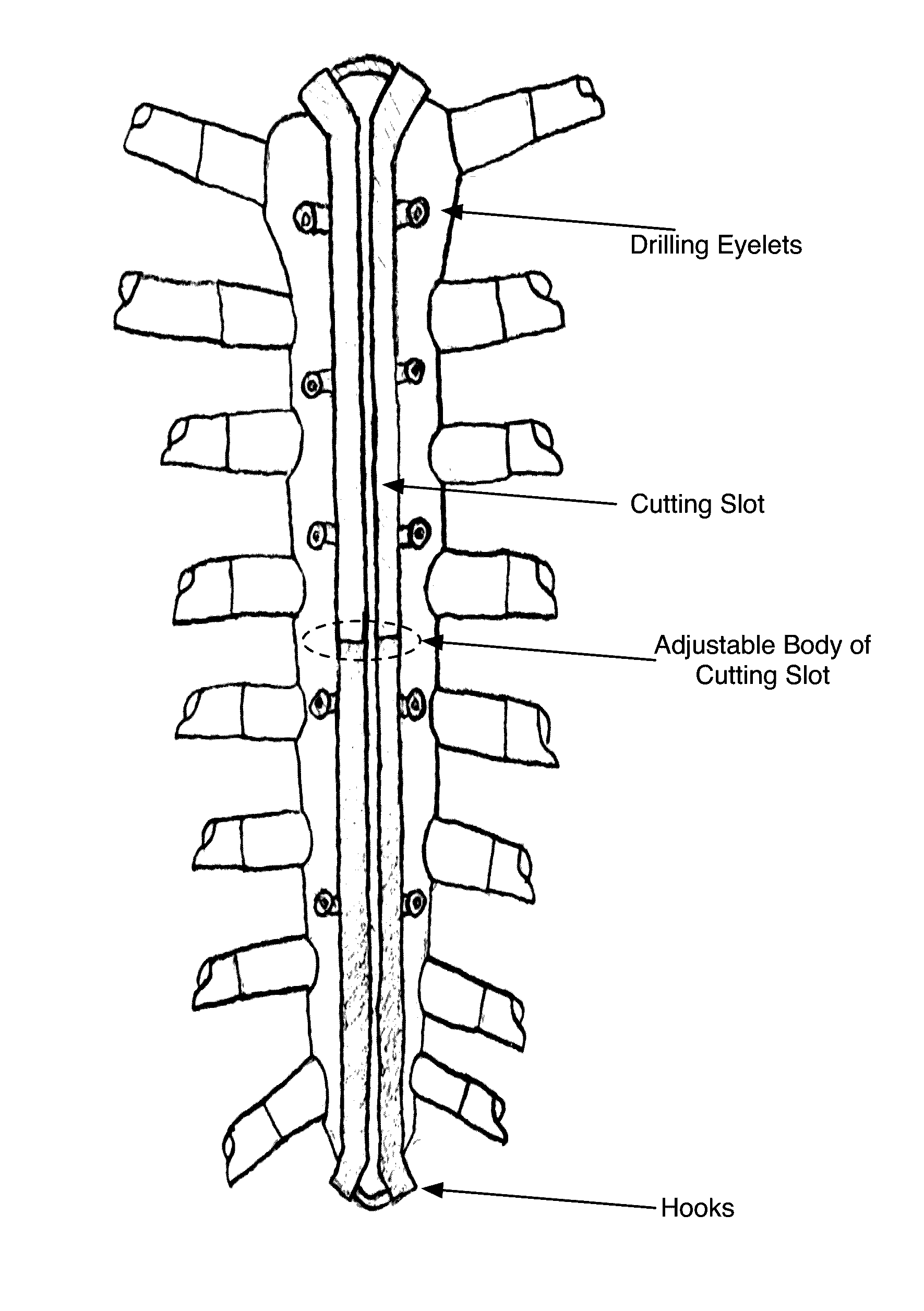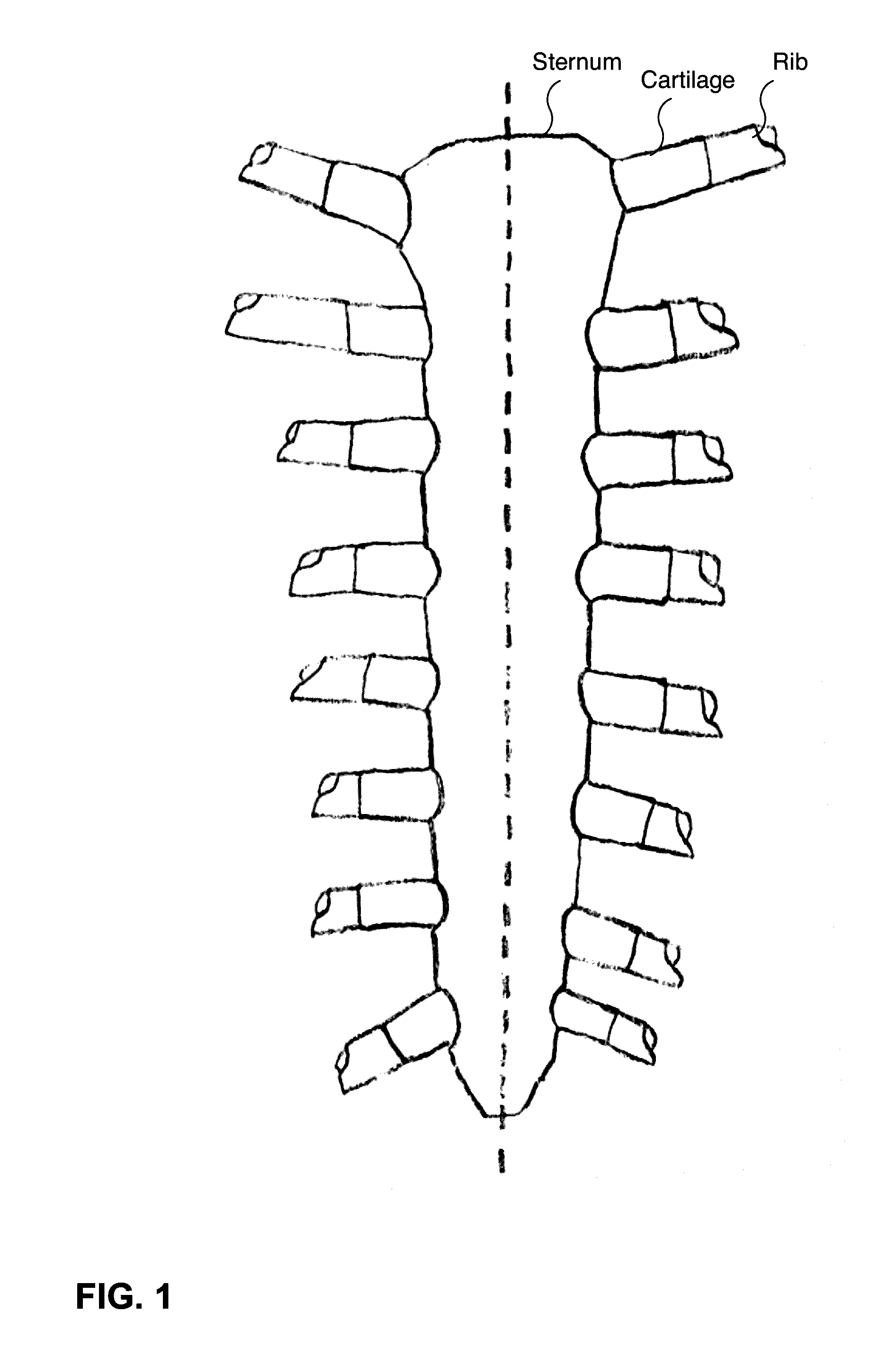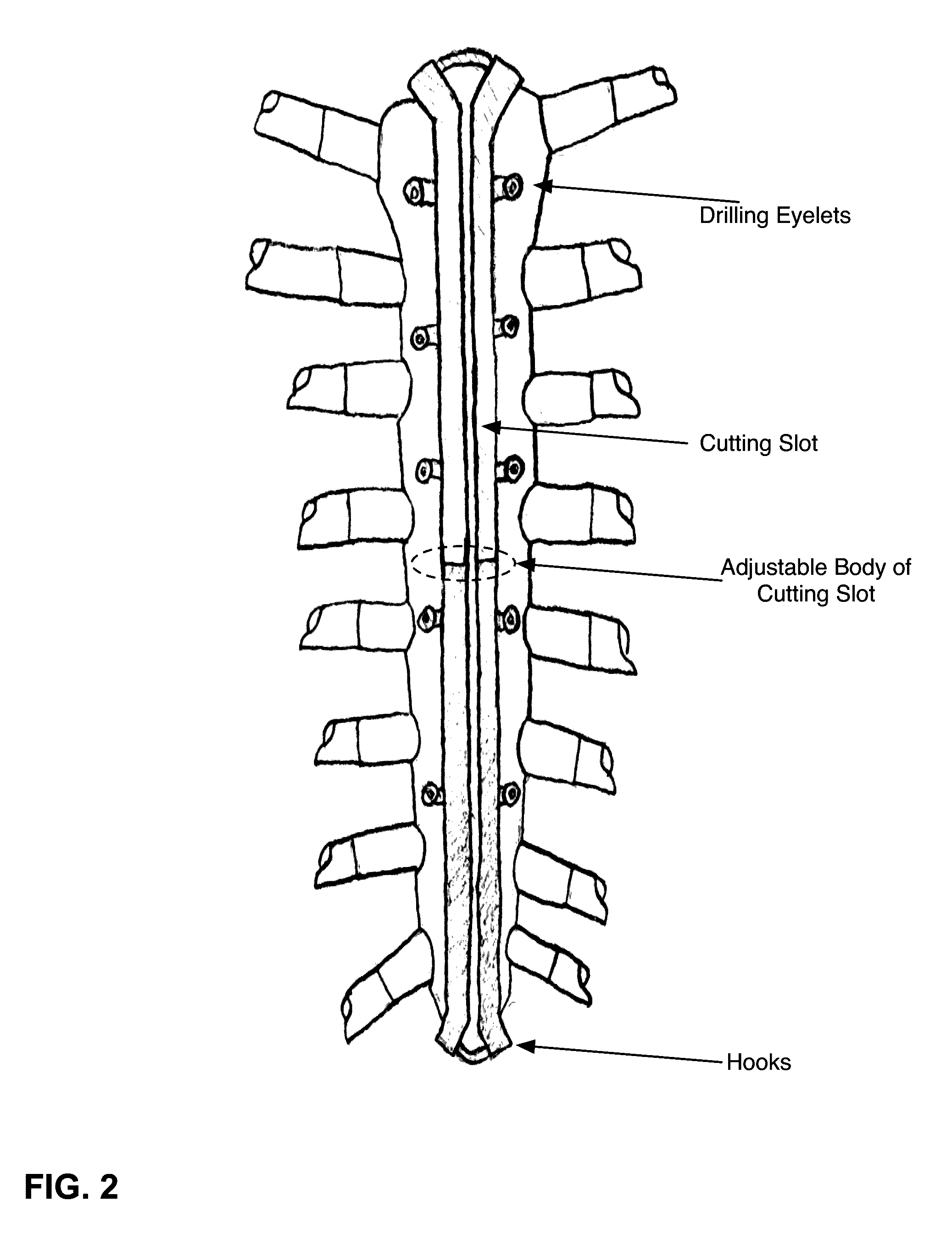Sternal osteotomy guide and sternal fixation system
a technology of sternal fixation and sternal osteotomy, which is applied in the field of sternal osteotomy guide and sternal fixation system, can solve the problems of prolonged hospital stay, significant morbidity and mortality, and complications of sternal wounds, and achieve the effect of providing anteroposterior stability, thicker or wider
- Summary
- Abstract
- Description
- Claims
- Application Information
AI Technical Summary
Benefits of technology
Problems solved by technology
Method used
Image
Examples
Embodiment Construction
[0025]Systems and methods are described for a sternal osteotomy guide and sternal fixation system. The purpose of the sternal osteotomy guide and sternal fixation system is to rigidly fix the hemi-sternal bones, providing both transverse compression and anteroposterior stability. The fixation method must allow rapid re-entry into the chest in the event of a post-operative, intra-thoracic catastrophe. Total time for creation of the midline sternotomy and closure using the most commonly employed current methods is approximately 10-15 minutes. Any technique that replaces these methods must be as fast or faster, relatively inexpensive, and provide fixation at least as efficiently. An ideal solution would not require the use of devices or techniques overtly foreign to the cardiac surgeon. An ideal method would provide the surgeon with uniformity of compression and minimal foreign material, case-to-case.
[0026]The sternal fixation system described in this application addresses major points...
PUM
 Login to View More
Login to View More Abstract
Description
Claims
Application Information
 Login to View More
Login to View More - R&D
- Intellectual Property
- Life Sciences
- Materials
- Tech Scout
- Unparalleled Data Quality
- Higher Quality Content
- 60% Fewer Hallucinations
Browse by: Latest US Patents, China's latest patents, Technical Efficacy Thesaurus, Application Domain, Technology Topic, Popular Technical Reports.
© 2025 PatSnap. All rights reserved.Legal|Privacy policy|Modern Slavery Act Transparency Statement|Sitemap|About US| Contact US: help@patsnap.com



